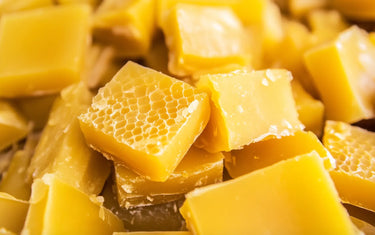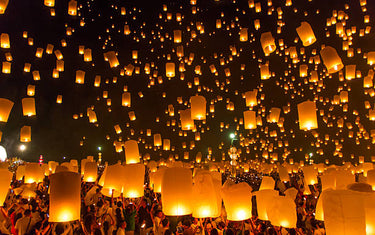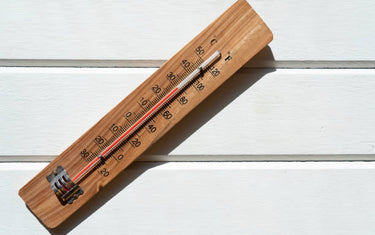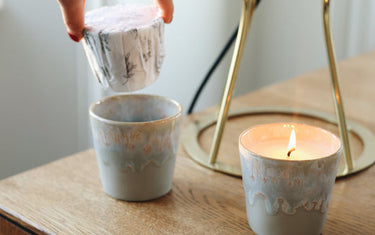4 min read / 11 April 2024 / yasmin sharp
How to Choose the Right Waxes for Your Candles and Wax Melts
Learn how to select the ideal wax for your candle and wax melt projects, considering factors like type, eco-friendliness, and fragrance retention.

When it comes to making candles and wax melts, there are a few important factors to consider to ensure you can get the most out of your new creation.
Each type of wax has its pros and cons, making them suited to certain types of candles – the problem is, how do you know which wax is the right one?
In this article we discuss how to find the best wax for candle making and wax melts and suggest which type of wax is best suited to certain designs.
What is wax made of?Regardless of whether it is derived from plant, animal or petroleum sources, wax is mostly composed of long-chain hydrocarbons (carbon and hydrogen atoms). Plant, animal and petroleum waxes are classed as natural waxes, whilst synthetic waxes can also include compounds and chemicals such as aldehydes and ketones. |
What wax are candles made of?
Candles can be made from a variety of wax types, including soy, paraffin, beeswax, palm, gel and coconut.
Every variant has its own pros and cons, although there are few factors to consider that will help you determine which one is the most suitable option.

What type of candle do you want to make?
Pillar candles
Pillar candles are free-standing, so you won’t need to place the wax into a container.
Soy pillar wax is the best type to use for this candle design, and you can also use a combination of the two, as they can be easily blended to produce a stable burn.
Container candles
A container candle is when wax is left to set inside a glass jar or other type of container, such as a metal tin.
The best candle waxes to use for these are paraffin wax, as it has a strong scent throw and leaves behind a smooth top after burning so the container is never left looking uneven and messy once the wax has cooled. Or a specifically designed soy wax made for container candles.
Wax melts
Wax melts are smaller, brightly coloured pieces of scented wax that are often designed in different shapes.
They are then placed onto an oil burner where they slowly melt and release their fragrance.
Soy wax is the best option for wax melts, as it has a slower melting point, which allows them to burn more slowly.
This is also the same reason why this wax is used for pillar candles, as it provides the shape with more stability and longevity.
Tealight candles
Tealight candles feature a thin metal or plastic cup wrapped around the wax to allow the wax to liquefy once the wick has been ignited.
They are a cost-efficient option that are designed to be circular in shape, with a width higher than their height.
Soy wax is the best option for tealight candles, although it can work just as well when blended with paraffin.
Taper candles
Taper candles are tall and thin in design so they can be used in candlestick holders.
The best candle wax for making candles that are moulded into a taper design is paraffin wax, as it is cost efficient and easy to work with, which makes it ideal for beginners.

How eco-friendly do you want your candle or wax melt wax to be?
Some people prefer to make candles and wax melts that are made from natural resources as they are concerned about the environmental impact created by some materials.
This is what makes soy wax such a popular choice, as it is non-toxic, biodegradable and non-carcinogenic.
The wax is derived from soybeans, which are grown without herbicides and pesticides, and it is also a good option for vegans, as it does not contain animal products or by-products.
What kind of texture and colour do you need?
Where paraffin wax has a clearer, smoother appearance, soy wax has a flatter, matte finish.
There is no right or wrong option here, as it comes down to personal preference, but this is something to consider during the planning stage.
Although some candle makers prefer not to add colour to their recipes, others want to include another layer of creativity to their design.
Paraffin wax is the go-to choice for many candlemakers as it holds colour very well, allowing you to make candles that have a strong and vibrant personality.
How long will the candle or wax melt last and how strong will the scent be?
The last two things to consider is the melting point of the wax and how well it can hold any essential oils or fragrance oils that have been added.
Paraffin wax has a typical melting point between 46 and 68°C (115 and 154 °F), which is relatively low compared to some other types of waxes.
This helps it to burn consistently and evenly, which allows the candle to melt efficiently.
The same is also true of soy wax, which has an even lower melting point ranging between 45-54°C (113-127°F).
Some waxes produce a better scent throw than others, which relates to how well the fragrance flows through the air when the candle or wax melt is being burned.
Paraffin wax excels particularly well in this regard, which is part of the reason why it is so widely used across candle brands.
The porous nature of soy wax also makes it a suitable choice for including fragrance oils and essential oils in your recipes.

Final thoughts
The type of candle you want to make, its environmental impact of the wax and whether you want to add colour and fragrance to the recipe, will all go a long way to helping you find the right wax for your candle or wax melt.
It all comes down to personal choice, so take some time to weigh up all of these factors to see what works best for you.
And regardless of the type of wax you use, the most important thing is to ensure it is from a reputable supplier, as this will ensure you can make a long-lasting, high-quality candle.










